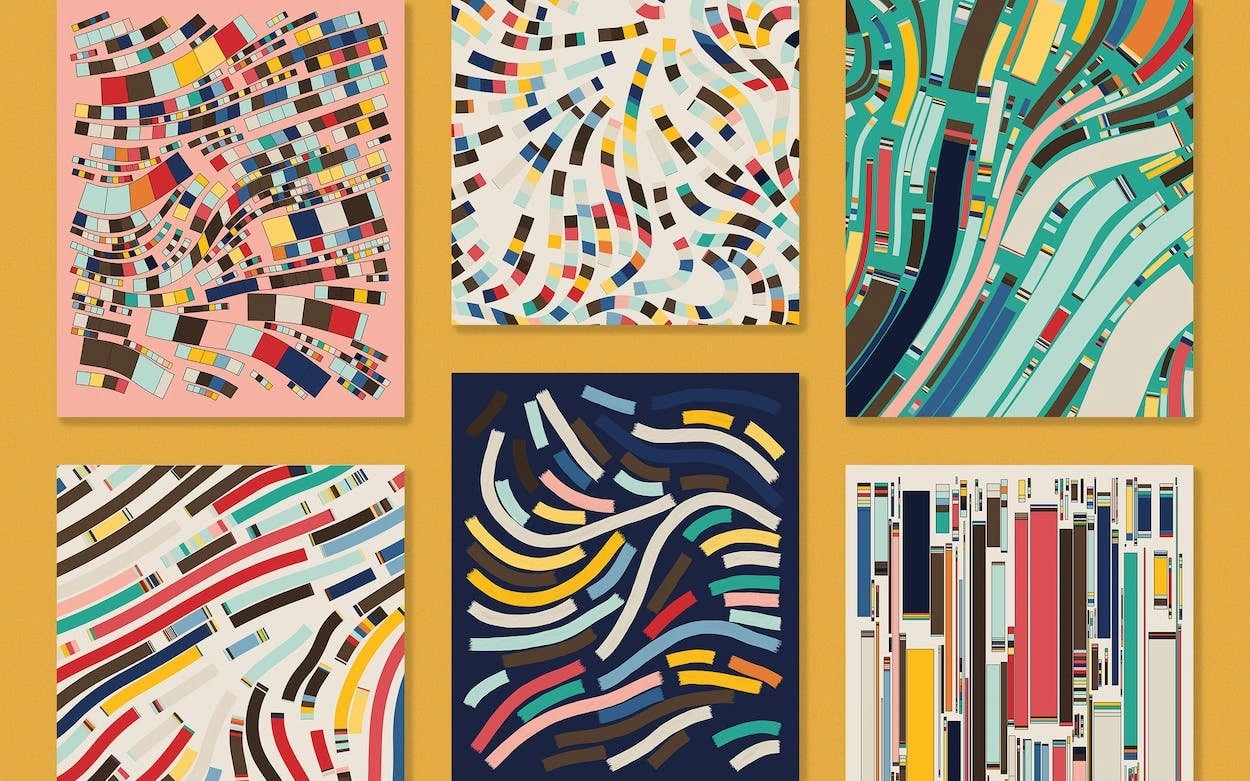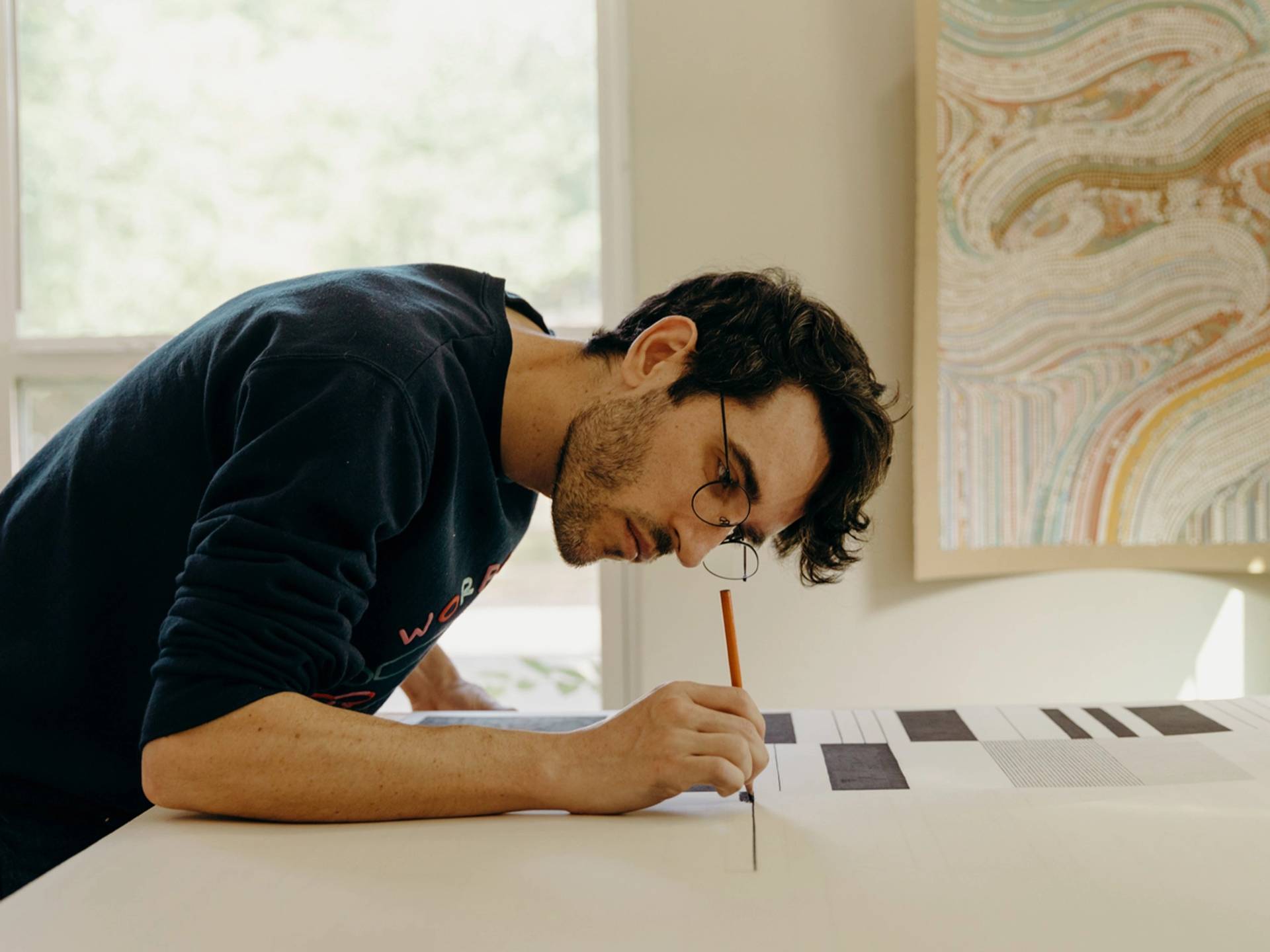위키 구독하기
Share wiki
Bookmark
Tyler Hobbs
Tyler Hobbs
**Tyler Hobbs(타일러 홉스)**는 Fidenza(피덴차) NFT 컬렉션의 제작자입니다. 그는 자율 시스템, 특히 컴퓨터 알고리즘을 활용하여 작품을 제작하기 때문에 생성형 예술 운동의 선구자로 여겨집니다. [4]
개인 생활 및 교육
텍사스 중부 출신인 Hobbs(홉스)는 어린 시절 스포츠, 다양한 음악 장르 탐구, 손으로 그린 만화책 제작 등 다양한 관심사를 가졌습니다. 미술학교에 진학하고 싶었지만 아버지의 조언으로 컴퓨터 과학을 전공하게 되었습니다. Hobbs(홉스)는 텍사스 오스틴 대학교에서 학부 과정을 마쳤습니다. [1]
경력
2010년, 그는 데이터베이스 회사인 DataStax에서 컴퓨터 엔지니어로 일하기 시작하여 오픈소스 고성능 데이터베이스 시스템을 전문으로 다루었습니다. 그는 2017년까지 회사에 근무했습니다. [1]
생성형 예술 기반 NFT를 전문으로 다루는 아트 플랫폼인 Art Blocks를 발견한 후, 그는 플랫폼 내에서 큐레이션된 아티스트가 되었습니다. 그는 컴퓨터 과학 경력을 그만두고 전업 아티스트가 되었습니다. [1]
Hobbs(홉스)에 따르면, 그의 작품 구매자는 전 세계의 중년 남성이 대부분입니다. 이들 중 많은 사람들은 미술품 수집 분야에 비교적 새로운 사람들로, 암호화폐 또는 기술 분야 출신입니다. Hobbs(홉스)는 이러한 인구 통계적 특징을 가진 사람들은 그의 작품 스타일을 향한 선입견이 적고, 전통적인 미술 애호가들이 종종 가지는 비인간적이거나 비진정성이라는 통념 없이 작품을 인식하는 경향이 있다고 언급합니다. Cointelegraph와의 인터뷰에서 Hobbs(홉스)는 다음과 같이 말했습니다.
그들은 일반적으로 작품에 관심이 있고, 검증되지 않은 것에 상당한 금액을 투자할 의향이 있습니다. 그런 종류의 수집가가 되려면 특별한 유형의 사람이 필요하다고 생각합니다. [1]
Fidenza(피덴차)
2021년 6월, 그는 복잡한 알고리즘을 개발하여 각각 개별 NFT로 발행된 999개의 독특한 컴퓨터 생성 이미지로 구성된 Fidenza(피덴차) 컬렉션을 만들었습니다. [2] Hobbs(홉스)는 다음과 같이 말했습니다.
Fidenza(피덴차)는 지금까지 제가 만든 알고리즘 중 가장 다재다능한 알고리즘입니다. 프로그램은 구조화된 곡선과 블록에 집중하지만, 사용할 수 있는 크기, 구성, 질감 및 색상 사용의 다양성은 광범위한 생성 가능성을 만듭니다. [3]
이 프로젝트는 공간과 시간에 걸쳐 유체의 분포와 움직임을 나타내는 이미지인 '흐름장'이라는 아이디어를 기반으로 합니다. Hobbs(홉스)는 컴퓨터가 이러한 이미지에 디지털 코드 레이어를 무작위로 선택하고 구현하여 색상, 크기, 난류와 같은 속성을 수정하고 작품의 최종 형태를 결정할 수 있도록 했습니다. 특정 코드 조각을 다른 코드보다 덜 자주 적용하도록 지정함으로써 각 작품의 고유한 특성 조합의 희귀성을 평가할 수 있습니다. [2]

인터뷰에서 Hobbs(홉스)는 Fidenza(피덴차)에 대한 아이디어의 기원은 "지난 5년 동안 아티스트의 작품에 존재하는 알고리즘 및 시각적 요소의 절정"이라고 말했습니다. 이전의 예술적 탐구에서 영감을 얻었지만, Fidenza(피덴차)는 32가지 변형으로 제한되었던 아티스트의 이전 노력을 능가하는 999개의 독특한 출력을 생성할 수 있는 알고리즘을 개발함으로써 실험에서 상당한 도약을 나타냈습니다. [2]
이탈리아 북부의 도시 이름을 따서 지어진 "Fidenza(피덴차)"라는 제목은 의도적으로 특별한 의미가 없도록 선택되었습니다. 아티스트는 시청자가 선입견 없이 작품을 해석할 수 있도록 하려고 했습니다. 도시 이름을 제목으로 사용하는 이 전략적인 접근 방식은 또 다른 영향력 있는 아티스트인 Franz Kline의 기법에서 영감을 받았습니다. [2]
개인전
- QQL: Analogs - PACE Gallery, 뉴욕, NY; 2023
- Mechanical Hand - Unit London, 런던, 영국; 2023
- Incomplete Control - Bright Moments, 뉴욕, NY; 2021
- Progress - Galería Dos Topos, 레온, GTO, 멕시코; 작품 17점; 2018
2023년 3월, Hobbs(홉스)는 뉴욕에 위치한 현대 미술관 Pace에서 열린 전시회 "QQL: Analogs"에 참여했습니다. 이 전시회에는 QQL NFT 컬렉션을 만드는 데 사용된 것과 동일한 QQL 알고리즘에서 유래한 12점의 대형 물리적 회화가 전시되었습니다. [5]
Hobbs(홉스)는 2022년 9월 QQL 컬렉션을 발행하여 약 1,700만 달러를 모금했습니다. 이 NFT 프로젝트는 시각 예술가 Tyler Hobbs(타일러 홉스)와 생성형 예술 플랫폼 Archipelago의 공동 설립자인 Dandelion Wist의 협업으로 이루어졌습니다. QQL 알고리즘은 공개적으로 사용할 수 있었지만, 민트 패스를 소지한 사람만이 공식적으로 컬렉션 내에서 자신의 작품을 NFT로 만들 수 있었습니다. NFT 수집가가 QQL 알고리즘을 사용하여 창작 과정에 참여하는 이 프로젝트는 Archipelago 플랫폼에서 수정된 더치 옥션으로 모든 민트 패스를 판매했습니다. [6]
기부
Hobbs(홉스)는 창출된 수익으로 개인적으로 중요한 단체에 기부했습니다. Processing Foundation은 약 21,000달러에 해당하는 8.5 ETH를 기부받았고, Girls Who Code는 같은 금액의 현금 기부를 받았습니다. [3]
환경적 영향을 완화하기 위해 탄소 상쇄를 구매하여 탄소 중립 또는 잠재적 탄소 음성을 달성하려고 했습니다. [3]
또한, Fidenza #163이 경매에 부쳐졌으며, 낙찰자에게는 작품의 수작업 플로터 드로잉이라는 특별한 인센티브가 제공되었습니다. 경매 수익은 약 19,000달러에 해당하는 7.7 ETH였으며, 노인과 간병인을 지원하는 단체인 AGE of Central Texas에 기부되었습니다. [3]
잘못된 내용이 있나요?
